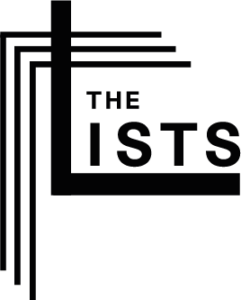A novel is a relatively long work of narrative fiction, typically written in prose and published as a book. The present English word for a long work of prose fiction derives from the Italian: novella for “new”, “news”, or “short story of something new”, itself from the Latin: novella, a singular noun use of the… Continue reading Novel
Author: admin
Poem
Poetry (derived from the Greek poiesis, “making”) is a form of literature that uses aesthetic and often rhythmic[1][2][3] qualities of language—such as phonaesthetics, sound symbolism, and metre—to evoke meanings in addition to, or in place of, the prosaic ostensible meaning. Poetry uses forms and conventions to suggest differential interpretations of words, or to evoke emotive responses. Devices such as assonance, alliteration, onomatopoeia, and rhythm may convey musical or incantatory effects. The use of ambiguity, symbolism, irony, and other stylistic elements of poetic diction often leaves a poem open to… Continue reading Poem
felting
Felt is a textile material that is produced by matting, condensing and pressing fibers together. Felt can be made of natural fibers such as wool or animal fur, or from synthetic fibers such as petroleum-based acrylic or acrylonitrile or wood pulp-based rayon. Blended fibers are also common.[1][2][3] Felt has special properties that allow it to… Continue reading felting
weaving & braiding
Weaving is a method of textile production in which two distinct sets of yarns or threads are interlaced at right angles to form a fabric or cloth. Other methods are knitting, crocheting, felting, and braiding or plaiting. The longitudinal threads are called the warp and the lateral threads are the weft, woof, or filling. (Weft is an old English word meaning “that which is woven”; compare leave and left.[a]) The method in which these threads are… Continue reading weaving & braiding
crochet
Crochet (English: /kroʊˈʃeɪ/;[1] French: [kʁɔʃɛ][2]) is a process of creating textiles by using a crochet hook to interlock loops of yarn, thread, or strands of other materials.[3] The name is derived from the French term crochet, meaning ‘small hook’. Hooks can be made from a variety of materials, such as metal, wood, bamboo, or plastic. The key difference between crochet and knitting, beyond the implements used for their… Continue reading crochet
Knitting
Knitting is a method by which yarn is manipulated to create a textile or fabric; it’s used in many types of garments. Knitting may be done by hand or by machine. Knitting creates stitches: loops of yarn in a row, either flat or in the round (tubular). There are usually many active stitches on the knitting needle at one time. Knitted fabric consists of a number of consecutive rows of connected loops… Continue reading Knitting
Sculpture Garden
like for example: via Niki de Saint Phalles Garden in Tuscany or in small: via the CAP BOOOK Favorite
Kulisse / Scenery
Theatrical scenery is that which is used as a setting for a theatrical production. Scenery may be just about anything, from a single chair to an elaborately re-created street, no matter how large or how small, whether the item was custom-made or is the genuine item, appropriated for theatrical use. wikipedia Bühnenbildner Co-des: issue 4… Continue reading Kulisse / Scenery
Packaging
Packaging is the science, art and technology of enclosing or protecting products for distribution, storage, sale, and use. Packaging also refers to the process of designing, evaluating, and producing packages. Packaging can be described as a coordinated system of preparing goods for transport, warehousing, logistics, sale, and end use. Packaging contains, protects, preserves, transports, informs,… Continue reading Packaging
gravure printing
To understand rotogravure printing, a brief primer of intaglio is required. Intaglio is the process used in printing and printmaking in which an image is incised into a surface and where the incised line – or sunken area – holds the ink. There are many applications for intaglio, such as the decoration of armor, musical… Continue reading gravure printing
